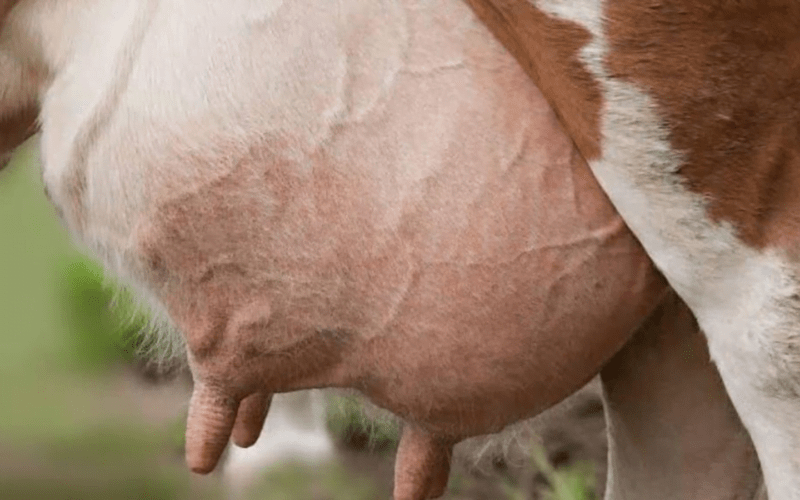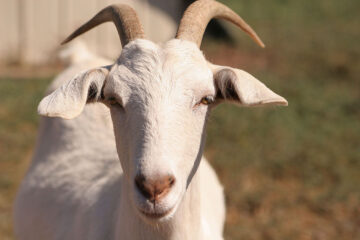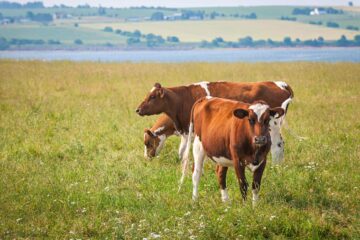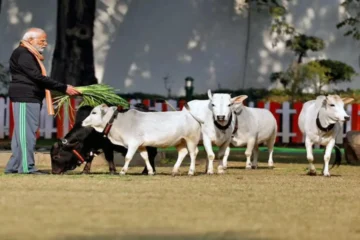India ranks first in global milk production, largely due to the growth of crossbred dairy cows. According to the 19th livestock census, the number of crossbred cows has increased by 35% in India. However, with this growth, the incidence of diseases affecting these cattle has also increased, with mastitis being one of the most significant. In India, 11.5% to 23.5% of dairy cows are affected by mastitis. This article explores mastitis and effective breeding practices for dairy cattle.
Understanding Mastitis
Mastitis is a severe disease caused by microbial infections that inflame the udder, affecting milk quality and reducing milk yield, leading to economic losses. It predominantly affects high-yielding cows, starting from their first lactation. This disease is caused by bacteria and viruses present in the environment, with bacteria such as Staphylococcus, Streptococcus, and E. coli causing the most damage. Mastitis severity increases when pathogens multiply and immunity decreases.
Although medications can control mastitis, recurring treatment costs and reduced milk production impact the overall profitability. In severe cases, mastitis may lead to the complete loss of milk production from one or both quarters, making it challenging to sell the milk from affected cows.
Causes of Mastitis
- Selection of high-yielding, imported breeds not suited to local climates, which often have lower immunity.
- Crossbreeding practices that incorporate over 50% foreign breed characteristics, reducing disease resistance.
- Unhygienic environments and improper milking practices.
Preventive Measures for Mastitis
- Selective Breeding: Purchase only cows suited to the local environment. For example, Jersey cows are well-suited to hot, flat regions, while Friesians perform better in cooler, lush areas like Ooty and Kodaikanal. Avoid raising pure foreign breeds, as they are not adapted to local climates and have lower immunity. Crossbred cows with 50-60% foreign characteristics are more resistant and productive.
- National Breeding Policy: To maintain optimal breed characteristics, the Indian government recommends that crossbred cows have no more than 50-60% foreign breed traits. Since no direct tests exist to determine breed composition, pedigree records are essential.
- Preference for Indigenous Breeds: Indigenous cows are generally resistant to mastitis and other diseases. Although they produce less milk, their higher immunity makes them suitable for various environmental conditions. Crossbred cows are preferred for higher milk production due to selective breeding with frozen semen from foreign bulls, but they require nutritious fodder and high-protein feed.
- Maintaining Breed Composition: Crossbred cows should maintain a 50-62.5% foreign breed composition to ensure high productivity and resistance. If this composition exceeds 50%, disease resistance decreases, increasing susceptibility to mastitis.
To achieve this balance, crossbreeding must be carefully managed. For instance, breeding an indigenous cow with 100% foreign semen yields a calf with 50% foreign characteristics. Breeding this 50% crossbred cow only with bulls or semen of similar composition preserves this balance across generations. Mixing breeds indiscriminately, such as mating Jersey cows with Friesian semen, can reduce local breed characteristics, compromising immunity and increasing disease risk.
Selection of Calves
- Choose healthy calves with high birth weights, born to disease-free cows, especially those with high milk production and short calving intervals.
- Avoid inbreeding and select calves born from outcrossing to maintain strong genetics.
- Colostrum, or the mother’s first milk, is crucial for calves, as it provides essential antibodies for immunity.
Upon birth, clean the calf thoroughly, sanitize the umbilical cord with tincture iodine, and follow regular deworming and vaccination schedules.
By maintaining a balanced breed composition of 50:50 (native and foreign traits) in crossbred cows and ensuring hygienic cattle management, mastitis and other diseases can be effectively managed.
Dr. R. Saravanan, Dr. N. Murali, Dr. P. Gobu, Dr. M. Malarmathi, Dr. M. Jayakumar, Department of Animal Genetics and Breeding, Veterinary College, Namakkal – 637 002.











